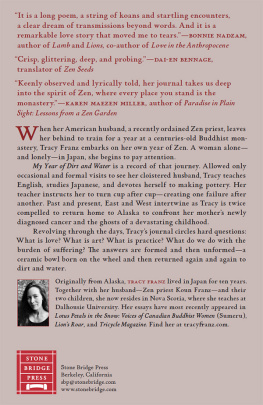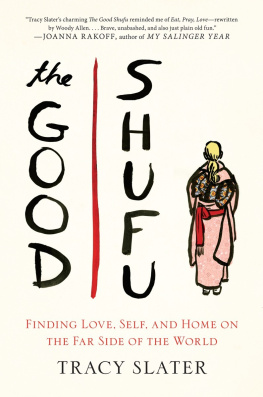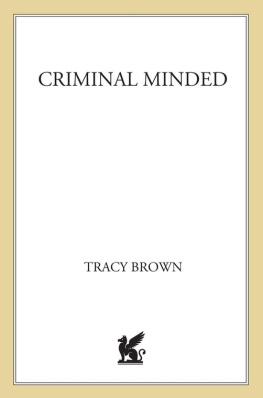In a year apart from everyone she loves, Tracy Franz reconciles her feelings of loneliness and displacement into acceptance and trust.
Keenly observed and lyrically told, her journal takes us deep into the spirit of Zen, where every place you stand is the monastery.
KAREN MAEZEN MILLER, author of Paradise in Plain Sight: Lessons from a Zen Garden
Crisp, glittering, deep, and probing.
DAI-EN BENNAGE, translator of Zen Seeds
Tracy Franzs My Year of Dirt and Water is both bold and quietly elegant in form and insight, and spacious enough for many striking paradoxes: the intimacy that arises in the midst of loneliness, finding belonging in exile, discovering real freedom on a journey punctuated by encounters with dark and cruel men, and moving forward into the unknown to finally excavate secrets of the past. It is a long poem, a string of koans and startling encounters, a clear dream of transmissions beyond words. And it is a remarkable love story that moved me to tears.
BONNIE NADZAM, author of Lamb and Lions, co-author of Love in the Anthropocene
A remarkable account of a womans sojourn, largely in Japan, while her husband undergoes a year-long training session in a Zen Buddhist monastery. Difficult, disciplined, and interesting as the husbands training toward becoming a monk may be, it is the authors tale that has our attention here.
JOHN KEEBLE, author of seven books, including The Shadows of Owls
Franz matches restraint with reflexiveness, crafting a narrative equally filled with the luminous particular and the telling omission. Death and impermanenceZens secret heartare very present.... [The memoir] incorporates Zen, pottery, living abroad, and Franzs past and present with skillful delicacy, connecting these elements as if by analogy. Traversing territory defined by lack, My Year of Dirt and Water offers the singular pleasure of a story that obscures but is not obscured.
LETITIA MONTGOMERY-RODGERS, Foreword Magazine

Published by
Stone Bridge Press
P. O. Box 8208, Berkeley, CA 94707
Text 2018 Tracy Franz.
The lines quoted from the poem by Ryokan are from a translation by Edward Seidensticker (https://www.nobelprize.org/nobel_prizes/literature/laureates/1968/kawabata-lecture.html).
Map artwork from Free Vector Maps, http://freevectormaps.com.
Cover design by Linda Ronan incorporating a photograph by Ekaterina Dema/Shutterstock.com. Book design by Peter Goodman.
All rights reserved.
No part of this book may be reproduced in any form without permission from the publisher.
Printed in the United States of America.
10 9 8 7 6 5 4 3 2 12022 2021 2020 2019 2018
p-ISBN: 978-1-61172-042-6
e-ISBN: 978-1-61172-930-6
for
Koun

Japan, Kyushu, and Kumamoto City

Sunday, February 29, 2004
Today marks a leap yeara day that does and does not exist. And so I am and am not on the island of Kyushu, Japan, driving the toll roads through night away from the Oita Ferry Terminal and toward the outskirts of Kumamoto City, my mind returning to one image superimposed on the rush of blacktop: my husbanda tall, shorn-headed American with his hand in the air, black monks robes jerking in the wind around his body. The sun swiftly sliding into the Inland Sea. The ship receding to a single dot of light and then, finally, extinguished.
Spring
MARCH
Beginnings
Monday, March 1
Why are you here?
For shugyo.
What is shugyo?
It is training in the way of Master Dogen Zenji.
Go away. You need to think about it some more.
~
I wake from my dreams to frigid air and a growing expansiveness in the center of my chest. Lying there, feeling itthe morning cold and also that diffusive emotion. Breathing it in and then out again. The breath visible in the morning light of a cold room. Outside, it is overcast and snowing white petals that dissolve on contact. Early plum blossoms bloom like fire along gnarled branches in the courtyard below the townhouse. It is spring in Kumamoto.
In the weeks and months before he left to enter the monastery, my husband Koun and I gathered bits of knowledge from his teacher and other priests in the Soto Zen lineage. We learned what would be expected of him, what his life was about to become. I wonder now, how many hours has he had to wait at the gates of Zuioji this morning, ritually asking to enter, ritually being rejected? How many hours standing in formal shashuhis elbows raised high and out, left fist against his chest, right hand on top, gaze unwavering? I imagine him already admitted into tanga-ryo, the waiting area, a small room within the monastery where new monks remain for at least a week. The random visits by senior monks, the limited sleep, and the constant and rigid stillness will test their sincerity and resolve before they are allowed to officially enter and be called by their Buddhist names, rather than simply anata, you.
From now on, hell likely wake at 3:00 a.m. to sit in zazenthe cross-legged posture of meditationor to kneel in formal seiza, his legs tucked beneath his body and pressed against cold tatami, while he silently memorizes ancient sutras. The only sound his breathing and the breathing of the other three or four new monks in the room. Bouts of shivering will come and go in gusts, like the snow drifting through the cracks between the warped fusuma sliding doors. After, he will take his bowl of rice gruel, a small warm coal in the belly. Much of this will be the same again until lunch, until dinner, until bedtime at 9 p.m., and even then, in his futon, he will never get warm. In this way, the hours and days and weeks will cycle through a pattern, and later he will enter other patterns.
The cold will eventually give them all chilblainsdarkened and bleeding earlobes, cracked knuckles, split feet and knees. But by then they wont mind so much, the cold having become just another process of the body, like respiration.
I rise from the futon to dress for the day, and close the gray curtains against gray light, but I leave the portable kerosene heaters untouched. Better to feel the chill this morning. Those bright red blossoms burn through everything.
~
The Japanese school year has just ended, and it is quiet in the halls of Shokei Daigaku, the small womens university where I teach English. Inside my office, I sit at a desk with a pencil worrying between my teeththat gray light still in the wall of windows behind me. My grades and stack of year-end paperwork have already been turned in, but there is now the matter of our soon-to-expire visas to attend to.
Three days ago, Koun and I went together to Immigration, a dismal office smelling of paper and stale cigarette smoke. Behind the counter, sour-faced government workers riffled leisurely through stacks of documentstheir sole job, seemingly, to produce as much red tape as possible.
Koun cleared his throat as he approached the counter, and then he explained in humble Japanese, Im very sorry to trouble you, but it is important that we complete this paperwork today. It will be difficult for me to return later. As added emphasis, I stood beside him and smiled in what I hoped was an ingratiating way.
Next page








![Tracy Fullerton [Tracy Fullerton] - Game Design Workshop, 3rd Edition](/uploads/posts/book/119440/thumbs/tracy-fullerton-tracy-fullerton-game-design.jpg)





